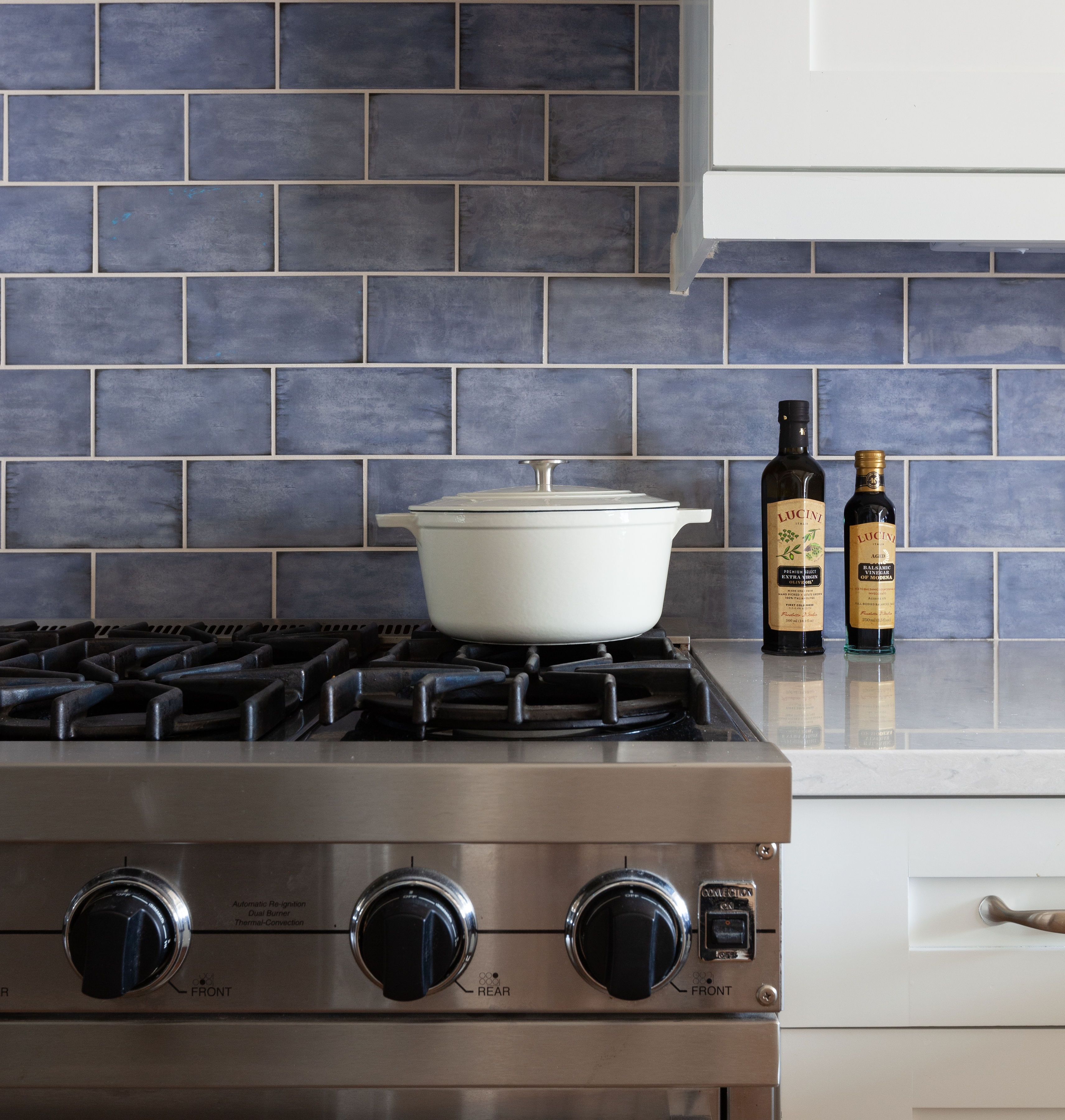How to clean stove grates
Use our top tips on how to clean stove grates to keep your cooker in perfect condition


Keeping your stove grates clean not only makes culinary tasks more enjoyable but it’s also more hygienic, too. 'Cooking grates are used on gas stoves to hold pots and pans above the gas burner,' says Lucy Searle, Global Editor in Chief for Homes & Gardens. 'They may be strong, sturdy and safe but they can get pretty grubby pretty quickly. Food splashes, spills and stains can all get burnt on and can be tricky to remove unless you carry out a regular deep clean.'
You may not want to clean stove grates thoroughly every time you cook, but by making this task part of your regular kitchen cleaning routine, it becomes second nature and is easier each time you do it. Follow our guide on how to clean your stove grates and your kitchen will get a new lease of life, too.
How to clean stove grates – step-by-step
When cleaning an oven, it's likely you'll want to deep clean stove grates, too. Most stove grates are made of cast iron as it’s a really hardwearing metal. If you are cleaning cast iron, never use steel wool or a metallic scouring pad as this will scratch the grates. Instead, use a heavy-duty non-metallic brush or non-scratch pad. If using a strong-smelling cleaning product such as ammonia, always rinse well in hot soapy water and dry thoroughly to prevent rust. Use this as an opportunity to clean stove burners, too.
Homemade cleaning solutions are naturally better, and they are kinder on the environment as well as using up everyday household items and store cupboard essentials.
1. Prep the stove grates for cleaning
First, make sure the grates are completely cool then take them off the stovetop and pop into an empty sink. Fill the sink with hot soapy water using your usual dish liquid and leave the grates to soak for a good 15 minutes.
2. After soaking, scrub the grates
Next, give them a good scrub, especially in all the nooks and crannies, to remove burnt-on food. You can also use an extra cleaner here for really tough areas. We recommend baking soda applied with a stiff, non-metal brush or non-scratch nylon pad.
3. Remove stubborn grease from stove grates
According to Taste of Home, unlike most surfaces, which can be cleaned using grapefruit juice or microfiber cloths, a stove’s burner grates are uniquely difficult to clean: 'Grease and oils stick to the metal surface and, depending on your style of grate, it can be frustrating to clean all the little nooks and crannies. Luckily there are tried-and-true methods that work all the time, every time.
Design expertise in your inbox – from inspiring decorating ideas and beautiful celebrity homes to practical gardening advice and shopping round-ups.
'One common kitchen assumption is that degreasers should work immediately. I know many friends and family members who protest that degreasers are ineffective. To clean burner grates on a gas stove effectively, you have to let the chemicals soak for a while.
'Powder degreasers work better on burner grates if you wet the surface first. The degreaser will slowly decompose build-up on the grating. Let the degreaser sit for a minimum of 15 minutes, but feel free to let it sit for 30 if the build-up is heavy. I don’t have a preference for any particular brand, but I have found that lemon oil degreasers tend to work better than other base types.'
4. Rinse the stove grates
Once you’re done, rinse the grates clean and dry with a clean cloth.
What is the easiest way to clean stove grates?
The easiest way to clean stove grates that are very dirty, create a paste by mixing three parts baking soda to one part water. Coat the grates in this mixture and set aside for 20 minutes. Wipe down the burners with a soft cloth. If you have coated the burners in baking soda paste, rinse this off first to avoid damaging the finish.
Can stove grates go in dishwasher?
Do not clean burner grates in the dishwasher. Burner grates are not dishwasher safe. Surface rust can occur if burner grates or oven racks are soaked for long periods or not dried thoroughly. Rust can be removed using fine grade steel wool and by cleaning with a no-scratch pad and a mild abrasive cleaner.
Next, learn how to get rid of the most stubborn grease and grime when learning how to clean stove drip pans.

Hayley is an interiors journalist, content provider and copywriter with 26 years experience who has contributed to a wide range of consumer magazines, trade titles, newspapers, blogs and online content. Specialising in kitchens and bathrooms, she has twice won the CEDIA Award for Best Technology feature. Hayley writes for H&G about kitchens, bathrooms, cleaning, DIY and organizing.